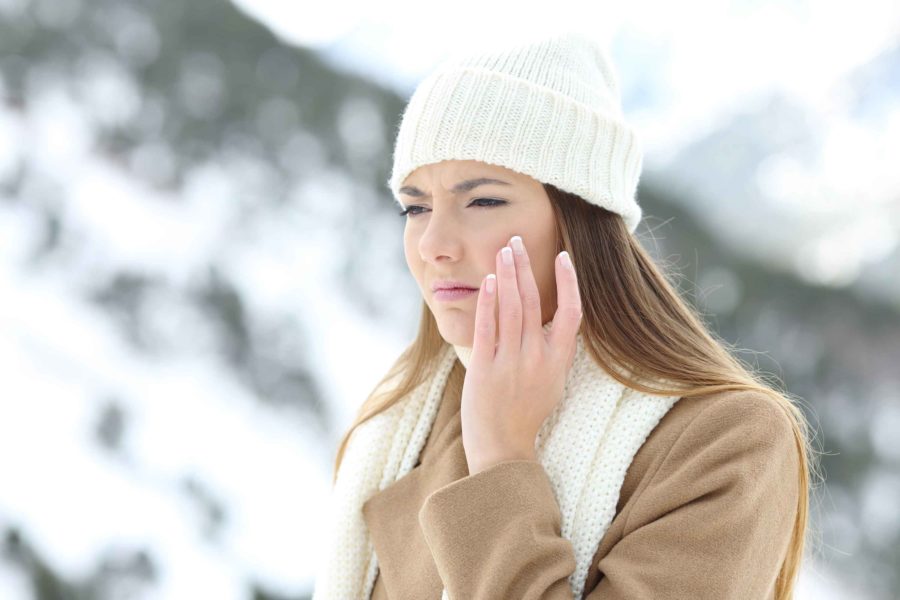Wintertime brings plenty of flakes. And, we don’t mean the snowy kind.
Chilly temps, low humidity, and whipping winds are unkind to your complexion. Translation: you’ve traded in your healthy glow for brittle, lackluster skin.
“In the winter, the air both outside and inside is very dry, which can be dehydrating to your skin,” says Boston-based esthetician Erin Burke. “Dehydrated skin can look sallow and dull, and fine lines are emphasized, which makes us look older. It’s crucial to keep skin hydrated in the winter by drinking lots of water, using rich hydrating products and getting regular facials.”
Through proper care, seasonal woes will melt away to uncover a fresh glow. Here are some tips for keeping your skin at its best:
Update Your Cleanser
Your skin is fighting to hang onto its natural oils in the winter. Don’t make it more difficult.
Much like changing your wardrobe to be seasonally appropriate, swap out your skin care products for something cozier. Avoid foam-based cleansers and perfumed washes, which can be full of irritating alcohols, in favor of creamier alternatives. Washing with a gel or cream will not only remove impurities, but it will also protect the skin’s acid mantle or protective layer.
If your skin is super thirsty, try a cleansing oil like Epicuren Discovery Silk Radiance 3-in-1 or Burt’s Bees Facial Cleansing Oil with coconut and argan oils.
Slough the Rough Stuff
“Thick skinned” might be a good personality trait, but it is not one when it comes to your face. Winter brings just that — thick patches of dead cells that dull your complexion. While exfoliation is the key to recovery and cell turnover, how and when you do it make all the difference.
“Drop the abrasive scrubs and get your exfoliation with gentle acids like alpha hydroxy, beta hydroxy or glycolics,” suggests Lori Phoenix, RN, master medical aesthetics nurse at Dr. Joseph Russo’s private practice in Newton Centre. Stronger skin can tolerate Vitamin A peels or microdermabrasion to rid itself of the nasty flakes, whereas sensitive skin should take it easy with enzyme or fruit acid peels. Look for ‘smart enzymes’ as they only dissolve dead protein, so living cells remain intact for less irritation.
Gentle facials can also be transformative. “The HydraFacial is great for winter skin, because it’s super exfoliating,” says Burke, who performs them at Lash L’Amour’s Newton location. “It exfoliates skin not only with the tip of the wand, but also includes a glycolic and salicylic acid peel. Exfoliating dry, dead skin is what enables the hydrating vitamins and antioxidant serums to really penetrate.”
Too much of a good thing is just that. Never over-exfoliate. Twice a week should do the trick, or you’ll rob your skin of the moisture it’s trying to keep.
Hydrate, Hydrate, Hydrate
When your face is a keratin desert, it’s your job to rehydrate and nourish. The quickest way is to add serums (aka, moisturizers kicked up a notch) to your routine.
Serums should boast humectants, which grab onto water and hold it to the skin. Hyaluronic acid is the moisture-enhancing humectant of choice, holding 1,000 times its molecular weight in water. “It’s an element naturally found in our skin, so it’s super hydrating and plumps up your skin,” explains Burke. Other natural humectants to look for include Vitamin E and panthenol, a form of Vitamin B5.
Serums should also have an emollient, a film-forming substance that acts as a protective shield.
“Humectants need to be occluded with a heavy moisturizer to lock in the benefits and protect the skin from the elements,” adds Phoenix. “They have a consistency that mimics the natural lipid barrier, smoothing away flaky skin or refining the results of the recommended acids.” Look for essential fatty acids such as Omega 3-rich evening primrose oil or borage seed, or silicone, an emollient that creates a breathable barrier — allowing oxygen in and no water out.
Although it’s super important to make time for skin and self-care, if you feel like your schedule won’t allow a visit to a spa or professional, your local drugstore does have options, too.
Get to the Point
To boost hydration even further, you might need to put a finer point on it. Literally.
Enter microneedling, a minimally invasive treatment that involves puncturing the skin with needles (or dermaroller).
“Consider it aerating the lawn to get the fertilizer in,” says Phoenix. “Your skin is designed to keep things out. It only absorbs 7 percent of what you put on. You increase that by 80 percent when you do the roller.”
Don’t panic. Microneedling is painless and just what the doctor ordered.
“Home rolling is a simple, but effective, boost to your skin care routine,” she continues, noting Dr. Russo offers an at-home microneedling kit by MTS. “The process creates micro-channels in the skin, thereby allowing for deeper penetration of your home care products. Gentle products such as hyaluronic acid or hydrators should be layered on after the treatment.”
If you feel like you need more, go in for the professional treatment. While at-home needles are .2 to .3 mm and great for giving your winter-time skin care a little push, the needle depth increases during in-office treatment to .6 mm to 2.5 mm — the magic number shown to boost collagen production for plumper skin.
You can’t control temps going down, but you can certainly control whether your skin dries up. Welcome to softer skin, no matter the forecast.



 4 min read
4 min read


